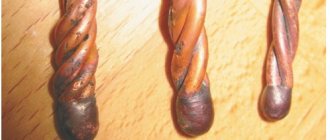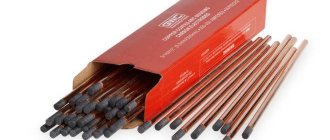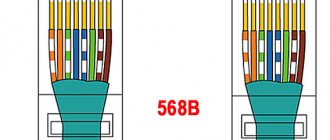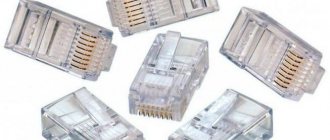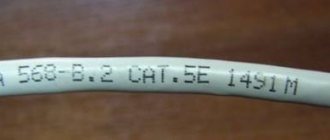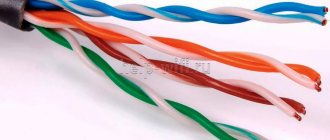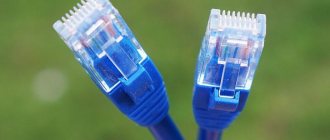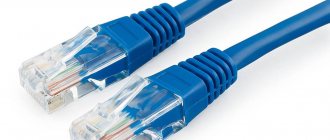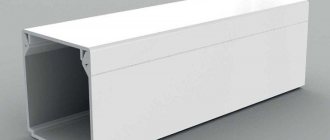To connect thin-conducting conductors, special connecting elements - Scotchlok - are used. With their help, fixation is performed by compression in contact like a knife version. The presence of a dielectric housing makes it possible to provide a reliable insulated connection. The material for the manufacture of the case is polypropylene, high-temperature resistant nylon or other elements. The water-repellent effect is provided by a hydrophobic gel located inside the device. This filling can significantly improve the practicality and ergonomics of contact insulation. Certain types of tape locks can create a connection to a branch line without removing or breaking the line. This connection is called "paralleling". In order to more accurately and thoroughly understand the differences between such products, the editors of the YaNashla website have prepared for you a review of popular and popular adhesive tapes for 2022.
What it is
Scotchlok are clamp terminal blocks for connecting current-carrying conductors. The core is fixed by compression in a knife-type contact. The body of the Scotchlocks is dielectric and allows you to make an insulated connection.
Usually made of polypropylene or fire-resistant nylon (different sources have different information) there is a U-shaped contact inside it that cuts through the insulation and provides a connection for the wires. The hydrophobic gel that Scotchlock is filled with will protect the connections from moisture, which significantly increases the reliability and durability of the contacts.
The development belongs to the company 3M, which is also known for adhesive solutions that are used in LED strips, insulation and other products. But Scotchlocks are also made by other brands, but 3M is more common than others.
According to the principle of operation, they are similar to piercing clamps for SIP brand wires. Certain types of adhesive tape can also create a branch connection from a line without relieving the voltage and without breaking it; such a connection is often called “paralleling.”
Installation is carried out in two steps - insertion of the conductor and crimp. Depending on the size of the adhesive tape, it is possible to connect cores with a cross-section from 0.4 to 4 square meters. mm depending on the specific model.
ScotchLock Connectors
These connectors are disposable and are designed for connecting low-current wires without stripping the insulation. Ideal for telephone cable and twisted pair cables. There are different modifications: two wires, three, with or without protective gel.
All you need from a tool is pliers. The wires that need to be connected are inserted into the connector all the way, and then this entire structure is sharply and strongly compressed with pliers. There should be a slight crunch/click and the top “plug” should sit down.
This cuts through the insulating sheath of the wire and the blade contact makes the connection inside the clamp. I use them to connect telephone cables in customer panels or for some kind of unraveling of twisted pairs (for example, how one twisted pair in a floor panel is connected to a telephone and an intercom at the same time).
Spring leads for dissimilar wires
They can be spring-type from different materials. They also help to eliminate direct contact between the cores. They can be detachable or non-detachable. One of the most famous and reliable ways to connect copper and aluminum cables is the Wago universal connector. The cross-section of the cores when using it can also be different.
Permanent wire connectors use the screw terminal principle. You can also use devices in which the metal plate is replaced by a special conductive rod. It is riveted to provide a secure connection. Exposed sections of the cable must be additionally insulated.
Having considered what types of wire connectors exist, as well as their characteristic differences, everyone will be able to choose the best option for connecting various devices or carrying out repair work.
Kinds
The 3M Scotchlock product line is broad enough to meet the needs of electricians in most situations. By type, connectors are distinguished:
- Passage;
- Dead-end;
- T-shaped.
By the number of wires, most often it is:
- On 2;
- For 3 wires;
There are terminal blocks with and without protective gel filling. Typically, each of the types that we will consider below can be found in these two versions. For example, UB2A connectors are filled with gel, and UB2A-D are their complete analog without gel. We have made a selection of types of Scotchlocks commonly used in practice.
For small sections:
- Scotchlock UY-2 gel-filled connector for two wires with a cross-section from 0.4 to 0.9 mm. The inlet allows the use of wire with an outer insulation diameter of 2.08 mm.
- The triple terminal block UR2 is used for branching the line. With its help, you can connect three conductors with a cross-section from 0.4 to 0.9 mm with an insulation diameter of up to 2.08 mm. Filled with gel.
- The UB2A tape lock is designed for paralleling wires to the main line with a cross-section of current-carrying conductors from 0.4 to 0.9 mm, the same as in the previous ones - the maximum insulation diameter is 2.08 mm.
- Type U1b feed-through connector for TPG 0.9-1.3 mm with insulation diameter up to 3.18 mm.
For large sections:
- Scotchlok 316 IR for wires with a cross-section of 0.5-1.5 sq. mm.
- Model MGC, connector for thick cores with a cross-section of 2.5 sq. mm.
- Scotchlok 558 – dead-end connectors are designed for connecting and tapping wires with a cross-section of 0.5-1.5 mm.
- Scotchlok 560 for branching without breaking the cable. Suitable for cores with a cross section of 0.75-1.5 mm. without gel due to design features. The terminal block opens like a suitcase and clamps the wires when closed, or the knife is pre-retracted with pliers.
- Model 534 terminal block is similar in design to the previous one, but differs in the permissible cross-section of the TPG, this time 1.5-2.5 sq.m. is allowed. mm.
- ScotchLok 952 is a T-connector, also designed for insertion perpendicular to the main line. Insertion at right angles occurs using a male terminal into the cut on the side of the connector when it is closed.
The listed types of adhesive locks should be enough for you in most practical situations, but now let’s move on to talking about how to use this type of terminal blocks.
Selecting a cable for a local network
The main task when planning structured cabling networks (SCN) is to create an infrastructure that will be used for many years. Therefore, the first thing you need to decide is the purpose of the local network. What devices will connect to it? Where will the cable be laid?
For example, twisted pair cable with 4 cores of category 5e remains an excellent choice for the “last meter” in FTTx networks, where 100 Mbps of throughput is quite enough, and a smaller number of pairs significantly saves the budget. In addition, the average lifespan of such a cable is about 3 years, and putting an ultra-reliable cable there is unprofitable.
On the other hand, the local network of a modern business center will be in operation for a long time. Here it is much more promising to use twisted pair cable of category 6.
In general, the main criteria for choosing a twisted pair are as follows:
Don't forget about the cable design. Unshielded twisted pair UTP is great for connecting workstations or telephone jacks. In a word, places where the presence of external interference is not critical.
In turn, shielded twisted pair FTP is more suitable for connecting office Wi-Fi access points, thin client workstations that require constant connection to the data center and other lines that are sensitive to interference.
Last, but not least, is the price of the issue. The difference between the nearest cable categories can reach 100%
But a lot of cable is required. In addition, modernizing the cable network in most cases means the need for cosmetic repairs to the premises. Yes, the problem is often solved by using cable boxes. But they do not always fit into the interior.
Today, the most promising access cable is Cat6. The throughput of twisted pair cables in this category fully covers the needs of an office data transmission network for the next 5-7 years.
If we are talking about access points, then it is better to use a shielded Cat6A/7 cable. Wi-Fi speeds are growing by leaps and bounds, and in recent years there has been a trend towards creating wireless office networks. And here the requirements for throughput become more stringent.
How to connect wires using tape
Let's look at how a connection using Scotchlock is used. Using an adhesive tape in which a mortise contact is installed, two wires are connected to each other, with a maximum diameter of 0.4 mm. In this case, preliminary stripping of the insulation is not necessary; simply pressing the red button activates the contact plate. Under the influence of the contact plate, the insulation of the wires is cut through and they are further connected by insertion into the copper part.
In essence, this is a specially designed spring blade contact. After which, the connector cover snaps into place and the desired contact is held in the conductors. The contact points are protected by a water-repellent gel, which is placed inside the adhesive tape. Consequently, the tightness of the entire area where the contacts are located is ensured. Then diffusion occurs, which reliably connects the contact and the wire in a cold way.
This connection is used when it is necessary to make a wire branch from the main line and it is necessary to reliably insulate the connection. Designed to work with a variety of cables. There are designs of Scotchlocks that allow them to be used in conventional electrical networks. Therefore, in this case, the maximum cross-section of cables and wires is 4 mm, and taking into account insulation 5 mm. Products can operate at a nominal voltage of 600 volts, and in some cases 1000 volts.
Methods for connecting an Internet cable
Let's look at 4 methods that can be called household. Some of them require the use of special tools, others are performed almost manually. If all four instructions seem complicated to you, you can simply go to the store and purchase a patch cord of the required length.
Option #1 - twisting wires
If you have ever dealt with electrical wires, then you understand perfectly well what twisting is. This is a connection of single-purpose cores using the twisting method followed by insulation.
Twisting is used to distribute wires in junction boxes, when connecting switches and sockets, and to connect broken electrical circuits.
Of course, such a connection cannot be called effective, since negative consequences in the form of signal attenuation are possible. However, the wire will still remain working and will be suitable at least for temporary use.
For work, we recommend preparing:
- knife, scissors or a special tool for removing braid;
- stripper for stripping cores;
- tin solder 0.3-0.5 mm;
- heat shrink 1.5 mm (after heating - 0.75 mm);
- matches;
- electrical tape.
Step-by-step instructions for twisting twisted pair cables:
If everything is done carefully, the shape of the cable will hardly change. Thanks to this, it can be pulled into a wall hole or closed into a baseboard.
But at the first opportunity, we recommend replacing the “reanimated” twisted pair with a solid factory-made wire. This is necessary both for safety reasons and to ensure a stable signal.
Option #2 - soldering
Ordinary Internet users are unlikely to have a soldering machine at hand and actively use it, so we recommend using twisted pair soldering only for people who own the equipment.
This method could not be considered, but the connections after heat treatment are indeed reliable, and the cable is operational.
It is more convenient to work with a modern tool - a soldering iron with a display showing the heating temperature, or a stripper - a professional replacement for a knife.
Separate solder and flux are best left to professionals; combined wire has long been produced for amateurs.
Instructions for soldering the network cable:
- We remove the outer insulation from both sections of the cable. You don’t have to cut it, but cut it lengthwise and bend it for a while, so that you can put it back in place later.
- We disassemble the pairs of conductors and strip them of insulation. It is better to use a stripper, since a knife or wire cutters can damage the veins.
- We twist pairs of identical conductors of both cables. They can be easily identified by the color of the insulation. Trim off the excess.
- We solder twisted wires: heat them and apply solder. We make sure that it is evenly distributed over the place of twisting. The result should be a strong, inextricable connection.
- We first insulate each soldered wire separately, then all together - we wrap the switching point with a dense layer of electrical tape. We make sure that there are no bare areas left.
It is not recommended to take cords connected in this way outdoors or place them in rooms with high humidity.
If this is still necessary, then you need to seal the repaired section of the wire as much as possible. For protection, you can use, for example, polymer flexible hoses.
Option #3 - using a terminal
As in power electrics, in low-current electrics special terminals are used to connect wires. They can be found in online stores under the name “scotch locks”. These are compact plastic connectors with metal contacts.
Where are Scotchlocks suitable and where are they not?
The ideal place to use these connectors is in car electrical or speaker wires. Forget about all other methods - for low voltage, adhesive tape is the best option.
But for 220-volt wiring, Scotchlocks must be used with caution. Although the manufacturer indicates that the connectors operate up to 600 Volts, there are live spots in them that can be accidentally touched, for example, if you climb into a junction box.
Therefore, use them only if you are sure that no one except experienced electricians will go there, and even better, do not use them for dangerous voltage at all.
CS-CS.Net: Laboratory of the Electroshaman
Assembly of electrical panels, automation and automation for apartments and private houses. Programs for PLC. Stage lighting (light shows, equipment setup). Consultations, master classes.
Panel with automatic IPM for a cottage (Povarovo)
Automation of my bathroom using ABB CL logical relay
TwinLine panels in Dolgoprudny (townhouse) and Solnechnogorsk
Panel for a boiler room based on touch PLC OWEN (Papushevo)
Panels with IPM (network, generator, UPS) in Yadromino and Pobeda-2
Shield in LCD Monet on PLC ARIES with scenario light control
Power switchboard in Veselovo (Tula): Simple three-phase
Features of use
As you can see, there are two types of Scotchlocks. The first ones are those that open up like a suitcase. Rarely, but on forums you can find the name “suitcase-type terminal blocks”, and another option is non-expanding, to use them you need to press on the surface of the terminal block to cut into the wires. Both adhesive locks use the same U-shaped contacts. There are no special differences in how to use it.
For non-opening terminal blocks such as UY-2, UR2 and the like, there are special crimping pliers with flat parallel jaws.
But they can be successfully replaced with pliers, and in some cases squeezed with your fingers. The opening terminal blocks are compressed along the metal contact bracket in the open state.
Scotch tapes with gel do not require additional insulation. Placed on an insulated, unstripped wire. To connect, just cut the ends evenly and insert them into the hole or insert them into the open terminal block. In turn, it is better to additionally insulate tapes without gel with electrical tape or heat-shrink tubing.
Do not exceed the recommended conductor cross-sections and do not connect conductors that are thinner than specified. In the first case, you will damage the conductive wires, and in the second, you will not ensure proper fixation in the knife. You can connect cable products with solid and stranded conductors, but do not use tape locks for aluminum wire. Due to the fluidity of aluminum, the contact will quickly weaken.
How to extend and connect an Internet cable at home
Due to almost 90% coverage of high-rise buildings with high-speed broadband access to the global web, very often there is a need to extend the Internet cable around the house. For example, to move a router from one room to another or to extend a mesh from floor to floor. Another, similar in meaning, situation is when you need to connect a broken cable after it was chewed by a cat or cut by vandals in the entrance. You can, of course, call the provider’s installer, or a third-party advertising specialist, and he will do everything. But firstly, this is the time spent waiting for a specialist. Secondly, this is the money you will pay him for his work. Why, if you can do everything yourself at home?! In this article I want to dwell on this issue in more detail and talk about the most reliable ways to connect twisted pair cables to each other.
Joyner - RJ45 barrel connector
This is the most common way today to repair or extend a twisted pair cable. It is most often used by fitters and installers of Internet providers. This LAN connector looks like a small rectangular box with RJ45 connectors on both sides. Roughly speaking, the “mom-mom” type. The twisted pair is crimped into the connector from both sides and inserted into the joyner:
It is often called a splitter, but this is not entirely correct. The splitter has one input and two outputs. It is used to connect 2 computers using one 8-core cable, using 4 cores for each.
Coupler
In my opinion, this is the most correct LAN cable connector - both from the point of view of cable management and from the aesthetic side: everything is done beautifully and neatly. The coupler is made in the form of an opening box with 16 blade contacts. By the way, the same principle is used in network sockets. The cable is inserted into it from both sides and, using a screwdriver, is securely pressed into the blade contact.
In general, it is much more convenient to do this with a special tool - a puncher. It looks like a knife with a special V-shaped blade. It evenly pushes the wires into the knife contact of the coupler.
True, of course, there is no point in buying it for an ordinary user just to extend the Internet cable around the house once, so you can use an ordinary small slotted screwdriver. This twisted pair connection is held quite reliably and firmly. If it is used not indoors, but outdoors, it is better to wrap it properly with electrical tape so that water cannot get inside.
The big advantage of the coupler is that in order to connect or extend a twisted pair cable, you don’t need absolutely any specific tool - just a screwdriver and straight hands!
Regular power socket
If a joyner or coupler cannot always be found in radio parts stores, then a regular external network socket for an RJ45 connector can always be found. Even in electrical stores. Inside, such a socket consists of 8 blade contacts on one side and an RJ45 connector on the other:
One of the cables must be tucked into the knives with a screwdriver, in accordance with the color scheme. The second part of the cable must be crimped into a connector and inserted into the connector. Ready! Here is a video instruction on how to do it:
Nowadays you can buy a fairly compact socket and as a result the connection will look compact and aesthetically pleasing.
ScotchLok connector (ScotchLok UY2)
For those who are still fans of twisting, there is a more modern option than simply twisting the wires together. It's called Scotchlock. You don't need any special tool to do the job - just pliers.
To connect the Internet cable to each other, we strip it of general insulation on both sides and arrange it by color. We tuck the wires color-by-color into Scotchlock tape. After they are tucked in, we put the connector cap on top and clamp it with pliers. The main thing is without fanaticism. The task here is not to crush the Scotchlok, but to ensure that the veins come into good contact with the knife. The result will be a spliced network cable. Personally, I don’t like this type of connectors because then you don’t know where to put the resulting bouquet of wires and adhesive tapes. Most often in entrances I notice that they simply leave it hanging. As practice shows, sooner or later someone will cut off one of the veins or the hooligans will set fire to it.
Using Scotch-lock to connect twisted pair cables
For those who are still fans of twisting, there is a more modern option than simply twisting the wires together. It's called Scotchlock. You don't need any special tool to do the job - just pliers.
To connect the Internet cable to each other, we strip it of general insulation on both sides and arrange it by color. We tuck the wires color-by-color into Scotchlock tape. After they are tucked in, we put the connector cap on top and clamp it with pliers. The main thing is without fanaticism. The task here is not to crush the Scotchlok, but to ensure that the veins come into good contact with the knife. The result will be a spliced network cable.
Scope of application
Scotch locks are a popular simple device used by computer and telephone network installers to connect LEDs or other low current lines. Many people use Scotchlocks to connect elements of low-voltage automotive wiring. To work with such products, only pliers are required. To connect several cables together, you need to prepare them, tuck them into adhesive tape, then put a cap on top and clamp them with pliers. It is not recommended to make great efforts in this case, since the main task in this case is to connect the wires, and not to break the adhesive tape. The connection of power wires is most often fixed with other clamps.
